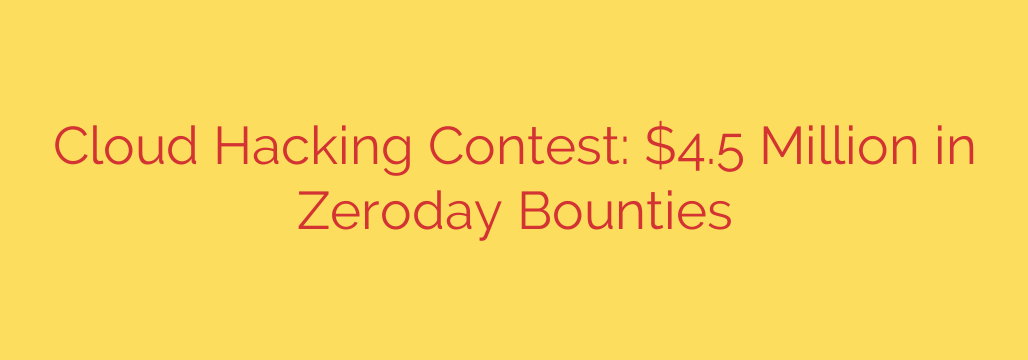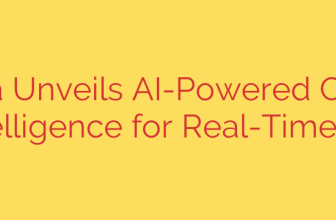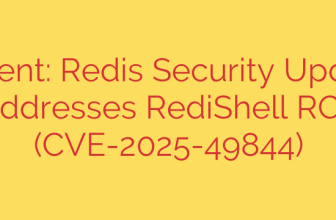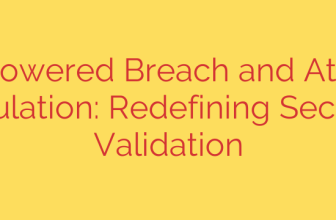
Elite Hackers Earn Over $1 Million Exposing Zero-Day Flaws in VMware, Windows, and Chrome
The world’s most trusted software is under constant scrutiny, not just from malicious actors, but from elite security researchers dedicated to finding critical flaws before they can be widely exploited. At the recent Pwn2Own Vancouver 2024 ethical hacking contest, researchers demonstrated just how vulnerable some of the most widely used enterprise applications can be, earning a staggering $1,132,500 for disclosing dozens of previously unknown zero-day vulnerabilities.
This premier event brings together top talent to legally hack fully patched systems, shining a light on critical security gaps. This year, researchers successfully targeted major platforms, including VMware, Microsoft, Oracle, and Google, proving that even the most secure systems can be breached.
The Top Exploits and Key Targets
The competition saw a series of impressive and complex attacks against a wide range of products. One researcher, Manfred Paul, stood out by earning the coveted “Master of Pwn” title and taking home $202,500 for his work.
Some of the most significant vulnerabilities discovered include:
- Virtual Machine Escapes: One of the most severe types of attacks involves breaking out of a virtual machine (VM) to gain control of the host operating system. Researchers successfully demonstrated VM escapes on both VMware Workstation and Oracle VirtualBox. Such an exploit is considered a critical failure in virtualized environments, as it completely undermines the security isolation that VMs are meant to provide.
- Remote Code Execution in Browsers: Manfred Paul successfully demonstrated remote code execution (RCE) exploits against both Google Chrome and Mozilla Firefox. An RCE vulnerability allows an attacker to run arbitrary code on a target machine simply by having the user visit a malicious webpage, making it one of an attacker’s most powerful tools.
- Microsoft SharePoint Compromised: Multiple teams successfully targeted Microsoft SharePoint, a collaboration platform used by countless organizations worldwide. Researchers from Theori and DEVCORE both demonstrated exploits that could lead to a full server takeover, highlighting significant risks for businesses relying on the platform.
- Windows 11 Privilege Escalation: The latest version of Microsoft’s operating system was not immune. Researchers from Synacktiv used a two-bug chain to escalate their privileges on a fully patched Windows 11 system, turning a low-level user into an administrator with full system control.
- Adobe Reader Hacked: A researcher from Haboob SA demonstrated a critical flaw in Adobe Reader that could be triggered by opening a malicious document, leading to code execution on the victim’s machine.
Why This Matters: The Importance of Responsible Disclosure
While the news of these vulnerabilities may seem alarming, the Pwn2Own contest is a crucial part of the global cybersecurity ecosystem. The event operates on a model of responsible disclosure.
Instead of these powerful zero-day exploits being sold on the dark web to criminals or state-sponsored actors, they are privately reported to the affected vendors by the event organizers. Vendors like Microsoft, Google, and VMware are then given a 90-day deadline to develop and release security patches to protect their users worldwide. In essence, these ethical hackers are paid to find flaws so that the entire digital community can become safer.
Actionable Security Tips: What You Should Do Now
The discovery of these vulnerabilities serves as a critical reminder for both individuals and organizations about the importance of proactive security measures. Here’s what you need to do:
- Prioritize Patching: The most important takeaway is the need for timely updates. Once vendors release patches for these discovered vulnerabilities, apply them immediately. Automating security updates for your operating systems, browsers, and key applications is the single most effective defense against known exploits.
- Embrace Defense-in-Depth: Do not rely on a single security solution. A layered security strategy—including firewalls, endpoint detection and response (EDR) tools, and strong user access controls—ensures that if one layer fails, others are in place to stop an attack.
- Monitor Vendor Advisories: Stay informed about security advisories from the software vendors you rely on. Subscribing to security newsletters and alerts from major providers like Microsoft, Adobe, and VMware can provide early warnings about critical patches.
- Secure Your Virtual Environments: For businesses using virtualization, the demonstrated VM escapes are a major warning. Ensure your hypervisors (like VMware ESXi) are always fully patched, network segmentation is properly configured, and access to management interfaces is strictly controlled.
Ultimately, events like Pwn2Own highlight the relentless and ongoing battle to secure our digital infrastructure. They celebrate the brilliant minds working to protect us and serve as a powerful reminder that in cybersecurity, vigilance is not optional—it’s essential.
Source: https://www.bleepingcomputer.com/news/security/zeroday-cloud-hacking-contest-offers-45-million-in-bounties/








